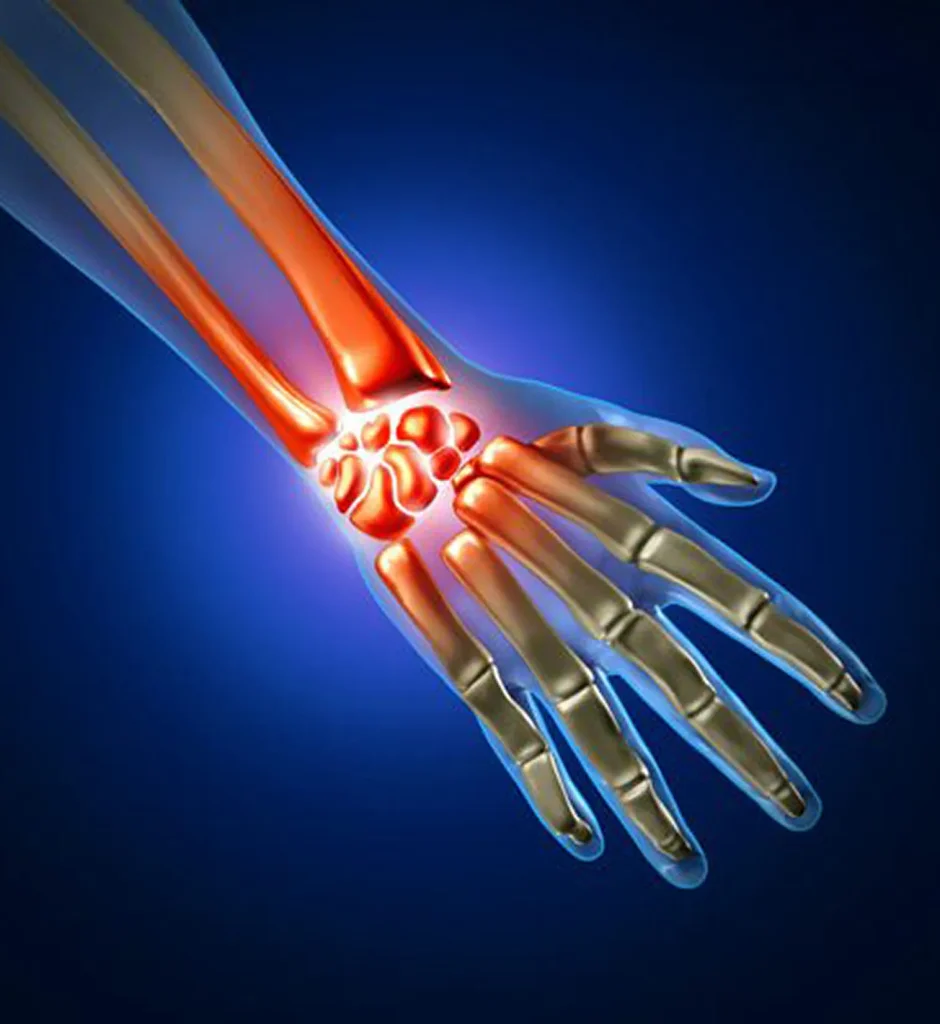Osteoarthritis
(Arthritis) Care for
Knees, Hips, Spine & Shoulders in Dallas–
Fort Worth
(Frisco • Allen • Farmers Branch)
Serving patients from Frisco, Allen, Farmers Branch, Mesquite & Arlington—minutes from Plano, Prosper and Richardson.
Overview
Osteoarthritis (OA) affects 32 million U.S. adults and is the leading cause of disability after age 50. Cartilage thins, bone stiffens, and pro-inflammatory cytokines accelerate joint breakdown. Our combination of PRP, stem-cell matrix and targeted rehab slows the process, reduces pain by up to 50 % for two years, and frequently postpones or eliminates the need for joint replacement.
Common Symptoms
Structural
- Joint-space narrowing, bone spurs
- Grinding or crepitus
- Pain with stairs, squats or prolonged standing
Key signs
- Warmth, swelling after activity
- Morning stiffness <30 min
- Night ache after busy days
Why Osteoarthritis Develops
- Age, past injuries and genetics all play a role.
- Tiny cartilage cracks let inflammation creep in; bone stiffens underneath, and muscles weaken, adding even more load.
- The cycle repeats until climbing stairs or even sleeping hurts.

How We Diagnose

Focused Ortho Exam
We test range, swelling and ligament stability.

Digital X-ray or ultrasound
shows joint-space loss, bone spurs or hidden effusion.

Image-guided test shot
Joint anesthetic test predicts PRP or stem cell success.
Biologic PRP / MSC vs Steroid Shot
vs Joint Replacement
lasts 12-24 mos
fades in 3-6 mos
months of rehab
weeks
bone damage
Core Biologic Strategy
Step 1
PRP Primer
Leukocyte-poor PRP modulates synovial macrophages from destructive M1 to healing M2 phenotype, calming pain and swelling.
Step 2
MSC Cartilage Build
Autologous stem cells add chondrogenic progenitors and secrete growth factors (TGF-β, IGF-1) that boost cartilage matrix synthesis.
Step 3
PRP Booster
Keeps the joint bathed in anti-inflammatory cytokines and growth factors for long-lasting relief.
Six-Month Integrative Program
- Three biologic sessions
- Class IV laser
- Progressive-load physiotherapy tailored to each joint
- Anti-inflammatory nutrition roadmap
- Quarterly imaging and gait / strength re-tests
Self-Care & Lifestyle Keys
- 10 000 steps/day goal (low-impact surfaces)
- Strength twice weekly: light squats, step-ups, resistance-band shoulder work
- Weight management: every 1 lb lost reduces knee force by 4 lb
- Supplement stack: glucosamine-chondroitin, omega-3, vitamin D and collagen peptides
Meet Our Care Team
Board-Certified Orthopedic Spine Surgeon
- Specializes in cervical, thoracic, and lumbar spine surgery
- Fellowship-trained in spinal reconstruction surgery
- Board Certified by the American Osteopathic Board of Orthopedic Surgeons
- Published researcher in Spine and national conference presenter (NASS, SRS)
Board-Certified Pain Management & Rehabilitation Specialist
- Fellowship-trained in interventional spine & pain management
- Board Certified in Physical Medicine and Rehabilitation
- Expertise in musculoskeletal pain, neuromuscular disorders, and electrodiagnostics
- Member of AAPMR, AAP, and American Osteopathic Association
Board-Certified Radiologist & Neuroradiologist
- Board Certified in Radiology with CAQs in Interventional Radiology and Neuroradiology
- Fellowship-trained in both interventional radiology and neuroradiology
- Former Chief Resident at University of Nebraska Medical Center
- Member of ACR, RSNA, SIR, and International Spine Intervention Society
Our Dallas–Fort Worth Locations
What Our Patients Are Saying
Lance Henry
“I saw Kassi today for a knee injection, she was very gentle. She explained the procedure well.”
Loretta Johnson
“Kassi recommended me to do a PRP injection for my shoulder injury. The office staff is very nice.”
Heidi Olson
“I had my visit with kassi today and she was wonderful. I drove an hour and a half to visit but I didn’t mind.”
Frequently Asked Questions
Rotator-cuff tears, tendonitis, bursitis, labral frays and early shoulder arthritis are common targets for biologic injections that ease pain and restore strength.
PRP delivers growth factors that calm inflammation, stimulate collagen and support tendon or bursal healing—ideal for partial tears and overuse syndromes.
Autologous stem-cell concentrate is reserved for chronic cuff degeneration or cuff-arthropathy where deeper cartilage or tendon regeneration is needed.
Yes—real-time ultrasound (and fluoroscopy when required) positions the needle precisely into the rotator-cuff tendon, labrum or glenohumeral joint.
Light resistance starts around week 3–4, with full overhead loads usually cleared by week 6–8 after pain-free range and strength tests.
Some shoulders improve after a single session, while advanced damage may benefit from a booster shot six-to-eight weeks later.